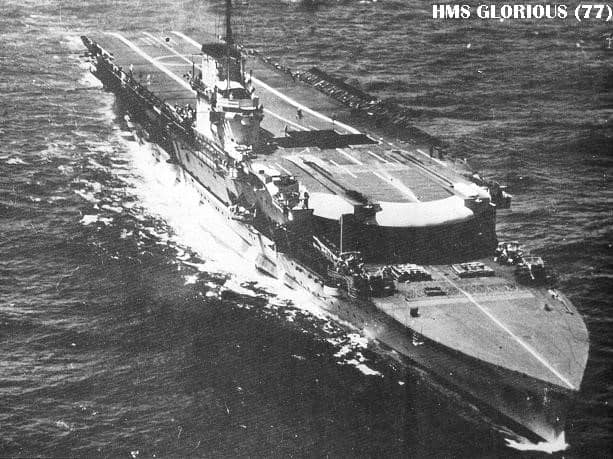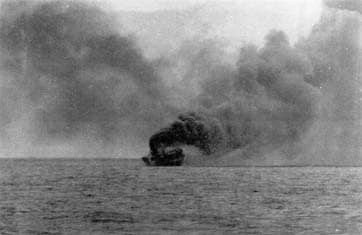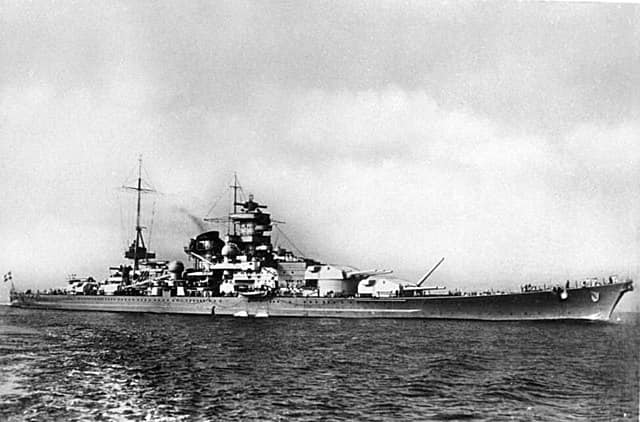Long Range Naval Gunnery

On the 8th June 1940, the British were evacuating their forces from Norway. At the same time, Scharnhorst and Gneisenau were trying to intercept British shipping.
Royal Navy aircraft carrier HMS Glorious was spotted by the Germans at 15:45 at a range of 46km. Her two destroyer escorts, HMS Ardent and HMS Acasta, were spotted soon after.
The British sent HMS Ardent to investigate but no other measures were taken: The carrier did not alter course, change speed or fly any combat patrol.
The Engagement

Scharnhorst opened fire on Ardent at 16:27 at a range of 15,000 metres, scoring several hits. The British ship withdrew but sank an hour later.
Scharnhorst switched her fire to Glorious at 16:32 and hit the British carrier with her third salvo, at a range of 25km. Gneisenau joined in and also opened fire, scoring hits.
As the Germans closed in, HMS Glorious was hit again several times despite HMS Acasta trying to maintain a smoke screen between the Germans and the British vessels. One hit damaged her deck, preventing any planes from taking off. Another hit caused her to slow down, jammed her rudder and she started taking on water and developed a list. She sank at 18:10.
Final Moments and Losses

HMS Acasta launched several torpedoes, one of which hit Scharnhorst, causing extensive damage. That was the British destroyer’s last charge, however, as she was raked by German gunfire and sank at 18:20.
This was the Royal Navy’s worst loss of WWII, with 1,519 British and Maltese sailors, marines and airmen killed.
During that episode, Scharnhorst achieved the longest range gunnery hit from a moving ship to a moving target in history. The German Battlecruiser remained a thorn on the side of the Royal Navy up until the 23rd of December 1943 when she was sunk by the British.
-RBM.









